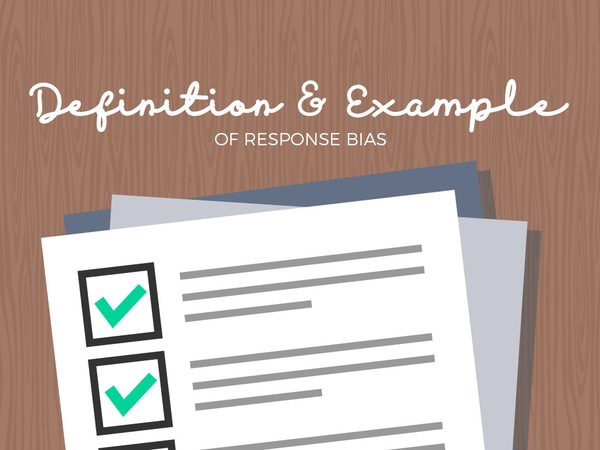What Is Response Bias and How to Avoid It
What is response bias and how does one avoid it?
- Response bias is bias that leads respondents to answer a question inaccurately
- In order to avoid this the following must be done:
- Choose your words carefully
- Frame your questions appropriately
- Provide more options for answers
- Properly arrange your questions
Even with the best WordPress survey plugins installed, surveyors may still get inaccurate data. This could happen even with the most researched and thought-out questions because they may not be worded or arranged properly. Such a fault in structure and communication can cause the respondents to react and answer with bias. This is called response bias.
Definition and Example of Response Bias
Response bias – which is also known as survey bias – is defined as the bias of a person, when answering a survey that leads him to answer the questions untruthfully or misleadingly.
A good example would be is if a person feels like his desired answer is truthful yet socially unacceptable and he chooses to give another answer. Unbeknownst to the respondent, he is already answering the question in a way that was not intended by the researchers of the survey. Because of this, baffling and inaccurate data will reach them and the survey will prove to be useless.
However, it is not the fault of the respondents. As mentioned above, poorly constructed questions lead respondents to have response bias. It will be discussed below how surveyors and their researchers can avoid having these faulty questions in their surveys.
How do you Lessen the Problem?
Just to be clear, elimination of response bias is impossible. This is because to avoid bias in a single person, the question must be worded in a way that he likes. However, the goal is to survey a large group of people and catering to all their preferences is mostly implausible.
Even if respondents are asked to answer because they have a common interest – such as sports, music, fashion, etc. – attitudes can still be completely different between two people in the same buyer persona.
With this in mind, the goal of avoiding response bias is to minimize it in a way that it won’t matter to the purpose of the survey. In order to do this, the tips below must be followed when structuring your questions:
-
Choose your words carefully
When creating a survey, one must know his target audience well enough to know the language most of them speak. This is so that they can comprehend the survey no matter how technical it may be. Especially for tech companies, they must be able to explain their questions without using jargons that cannot be understood by their consumers.
Terms that are overly-technical may lead respondents to assume what the terms mean. This is especially true for online surveys, where they cannot ask the surveyor directly what certain words mean.
Pre-testing surveys on a sample audience is a good way to make sure that it can connect with them. It’s like getting feedback for the feedback tool.
-
Frame your questions appropriately
While the previous tip was about using understandable words, this tip is about arranging them in order to create a relatable question. In other words, one must base the question around the answer he wants to get; this is commonly referred to as framing the question
A behavioral researcher named Dan Ariely made a study and a presentation about how different question designs affect the respondents’ answers. He and his fellow researchers wanted to know why countries have different organ donation rates. They found out that countries with an opt-out system had higher donation rates than those with opt-in systems. The simple change in question led to the donation rates being close to 100%; this is coming from a 4-10% rate.
Being aware of the situation and attitudes of buyer personas is the key to be able to word and frame questions properly and get the desired output.
-
Provide more options for answers
As for the answers that respondents can give, surveyors must consider giving open options. Examples of these include “I don’t know,” “does not apply to me,” or “other,” which is particularly useful when respondents are allowed to specify what this “other” is. Doing this will prevent them from giving an inaccurate answer just because they weren’t able to opt to give one that applies to them.
However, surveyors must also be careful and minimize open ended questions in order to get the best data and avoid survey fatigue.
-
Properly arrange your questions
Once the words, questions, and answers are done properly, the questions must then be arranged in a way that avoids response bias. This must be done, especially for long surveys, where survey fatigue is more likely to set in.
Everyone has experienced it; answering a long questionnaire and becoming lazy by the end of it. The easiest way to avoid this is to randomize the questions and answers. This will keep the respondents on their toes and minimize “shotgun” answers.
Key Takeaway
Giving a survey that yields desired results – whether positive or negative – is all about speaking the language of the respondents and countering any negative reactions they may have. Failure to do so could lead them to just give the most convenient answer instead of the most accurate one.

